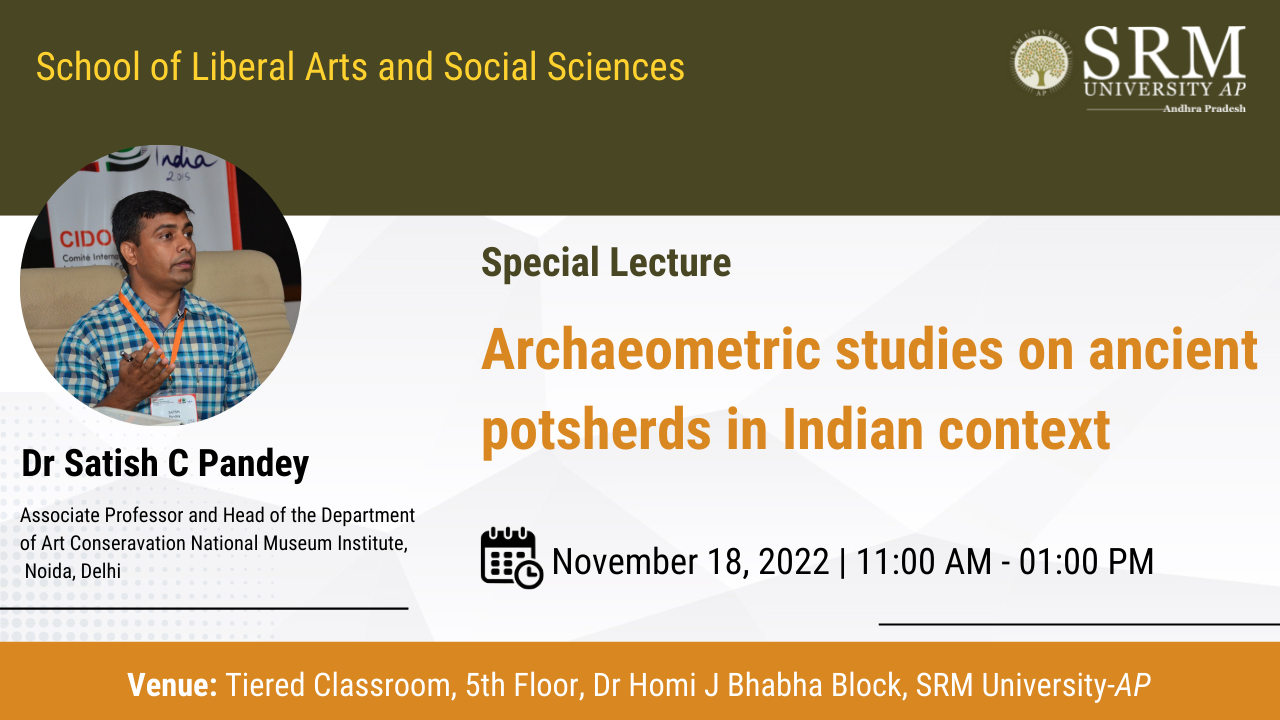- This event has passed.
Archaeometric studies on ancient potsherds in the Indian context
November 18, 2022 @ 11:00 am - 1:00 pm
 Pottery has always been of prime importance in archaeological studies; however, the emphasis has largely been on morphology and decoration. Scientific studies on archaeological pottery are often essential to the correct interpretation of pottery evidence. Although analytical studies on archaeological potsherds in India have been in practice for a long time, there is a lack of convergence of analytical and archaeological approaches to provide a meaningful and systematic study of the material culture of past societies.
Pottery has always been of prime importance in archaeological studies; however, the emphasis has largely been on morphology and decoration. Scientific studies on archaeological pottery are often essential to the correct interpretation of pottery evidence. Although analytical studies on archaeological potsherds in India have been in practice for a long time, there is a lack of convergence of analytical and archaeological approaches to provide a meaningful and systematic study of the material culture of past societies.
The School of Liberal Arts and Social Sciences is organising a special lecture on Archaeometric studies on ancient potsherds in the Indian context which will be handled by Dr Satish C Pandey, Associate Professor and Head of the Department, National Museum Institute, Noida, Delhi. He is a conservationist with major interests in archaeological and heritage conservation sciences.
Brief about the talk
The technological analysis of pottery looks beyond the mere physical dimensions of the materiality and is concerned with the procedures, skills, materials, and techniques used to produce the pottery. The technical information about the pottery fabric assimilated with its archaeological context may allow a comprehensive understanding of the Chaîne opératoire of the pottery technology through different phases of human existence. Archaeometric studies of pottery are fundamental to the classification and characterisation of pottery, providing relevant data, among other aspects, about its production, function, and social meaning.
Most studies carried out in India are fragmentary in nature, focusing mainly on material characterisation and provenance determination of the potsherd used in investigations, and have been unsuccessful in putting the scientific information back in a broader archaeological context. A systematic study of pottery technology ought to establish a link not only with the cultural phase it belongs to but also with the preceding cultures influencing its development.
Since the archaeological settlements provide stratigraphic sequences ranging from the pre-Harappan phase to the mature Harappan phase, the excavated pottery assemblages from these sequences provide an excellent opportunity to study the development of pottery technology through these phases. This study intents to scientifically investigate the technological development of pottery production in Harappan civilisation, one of the earliest civilisations across the globe.

